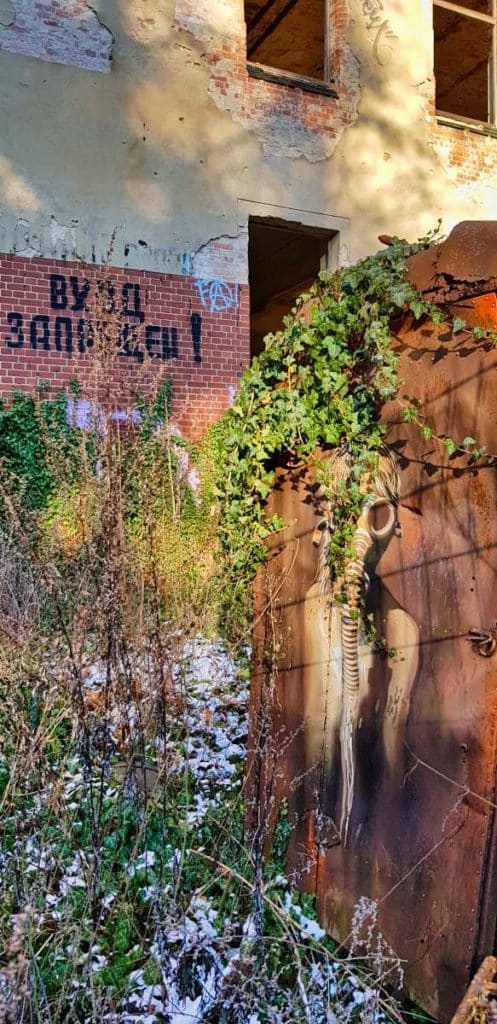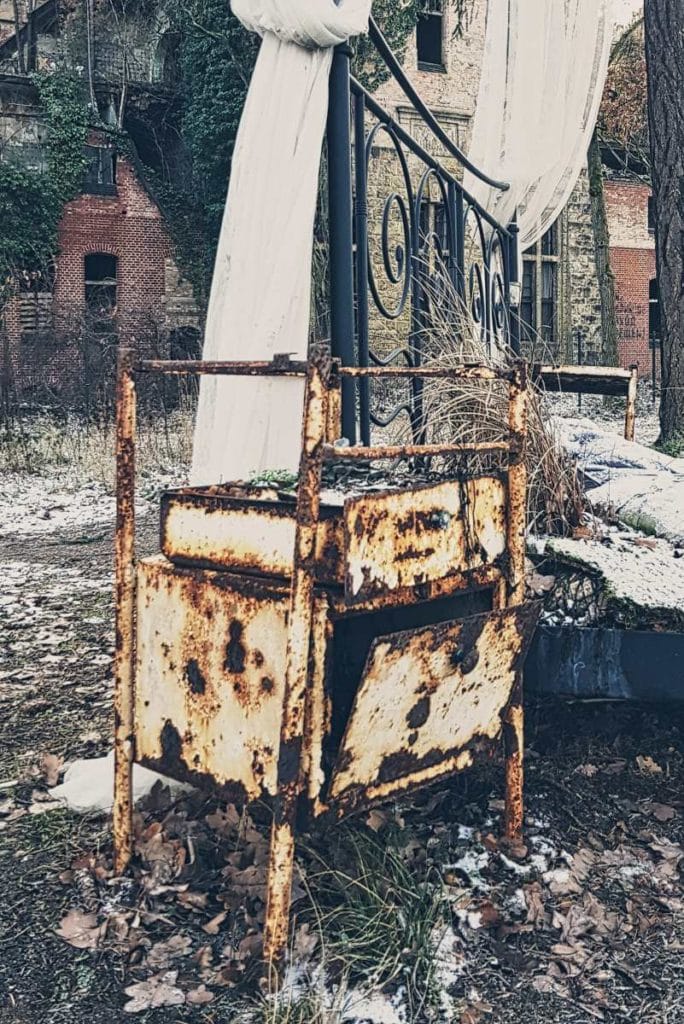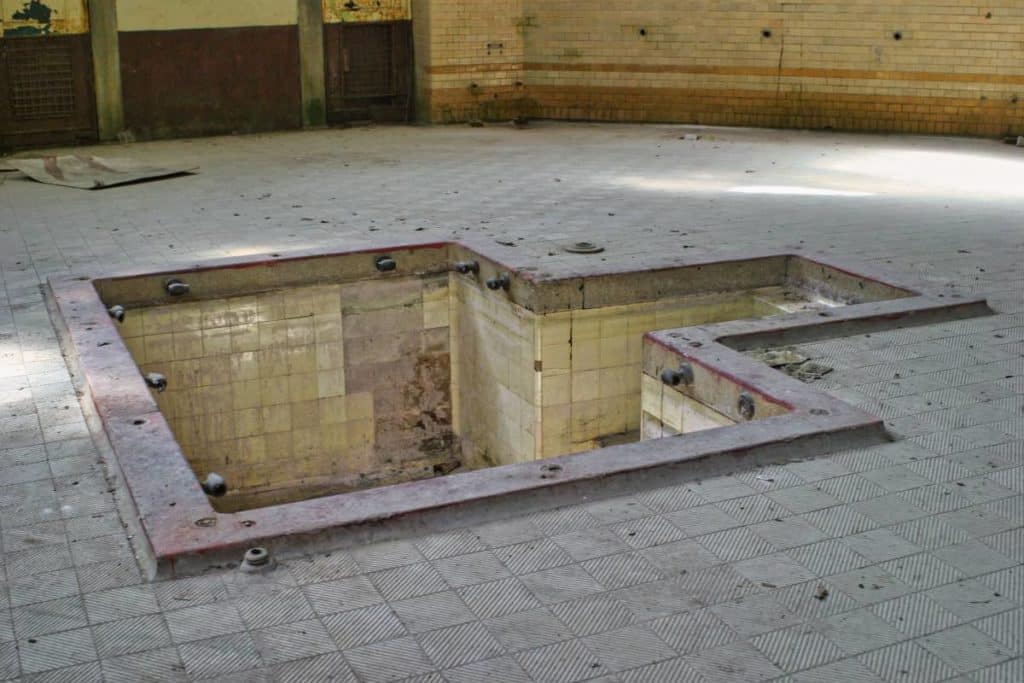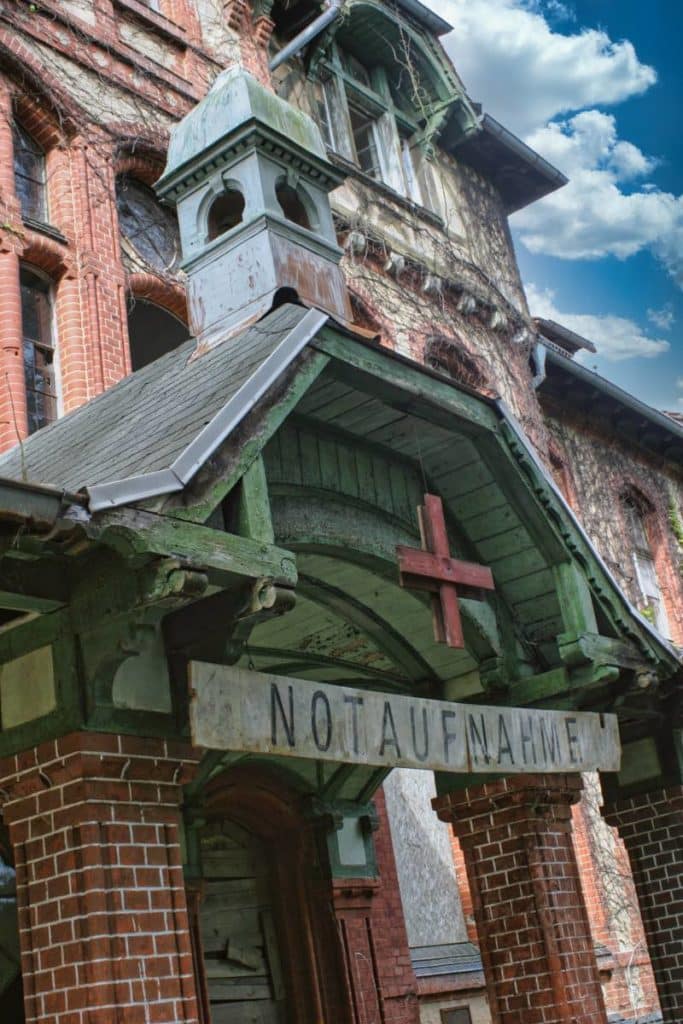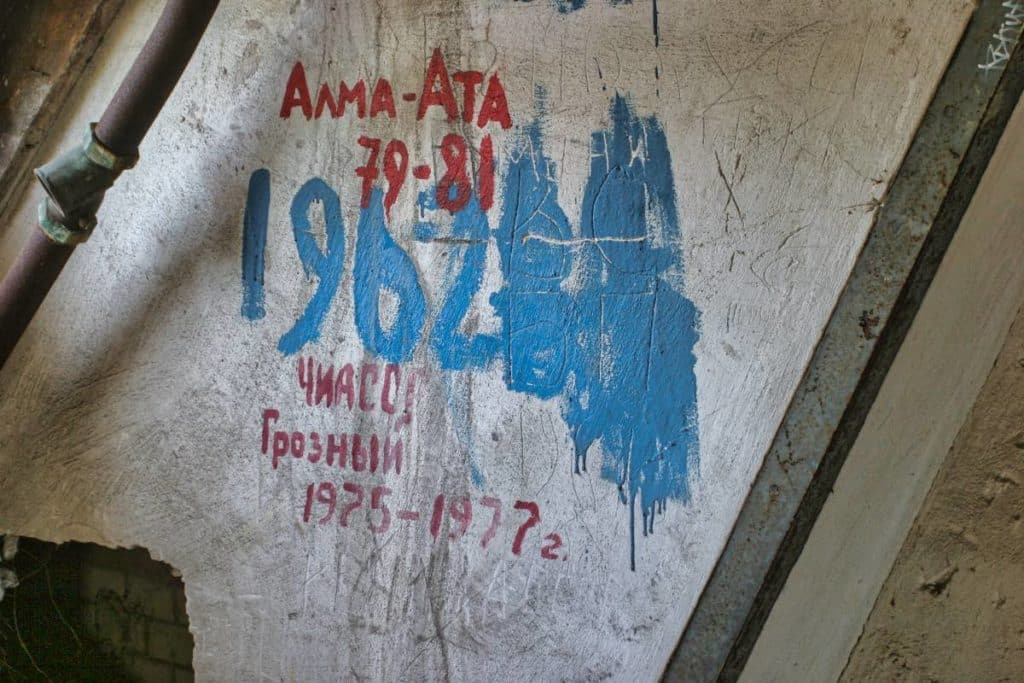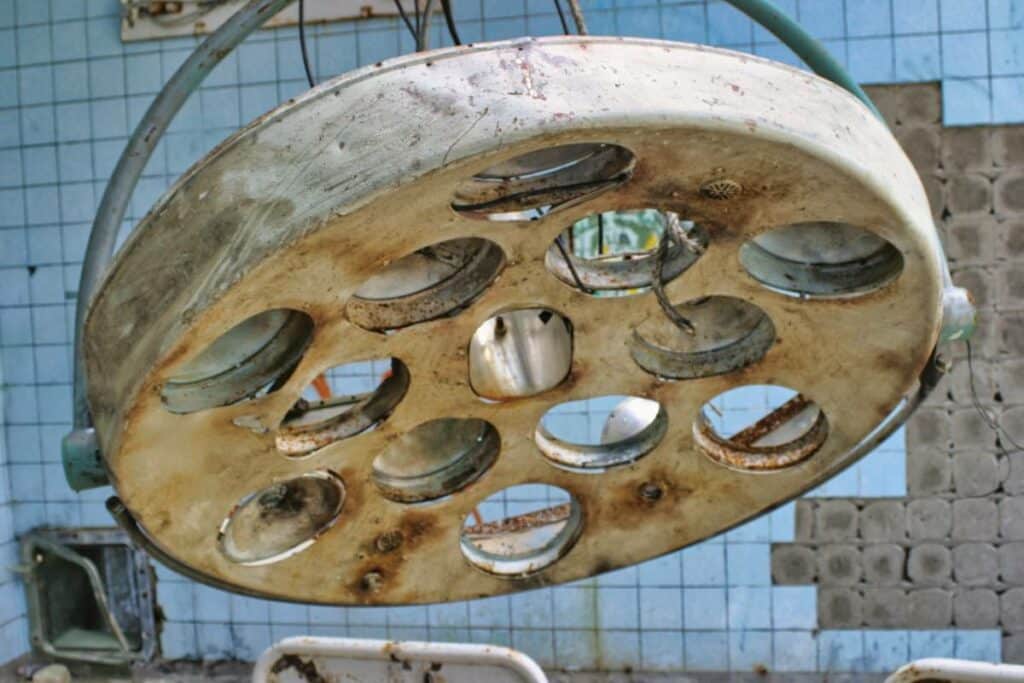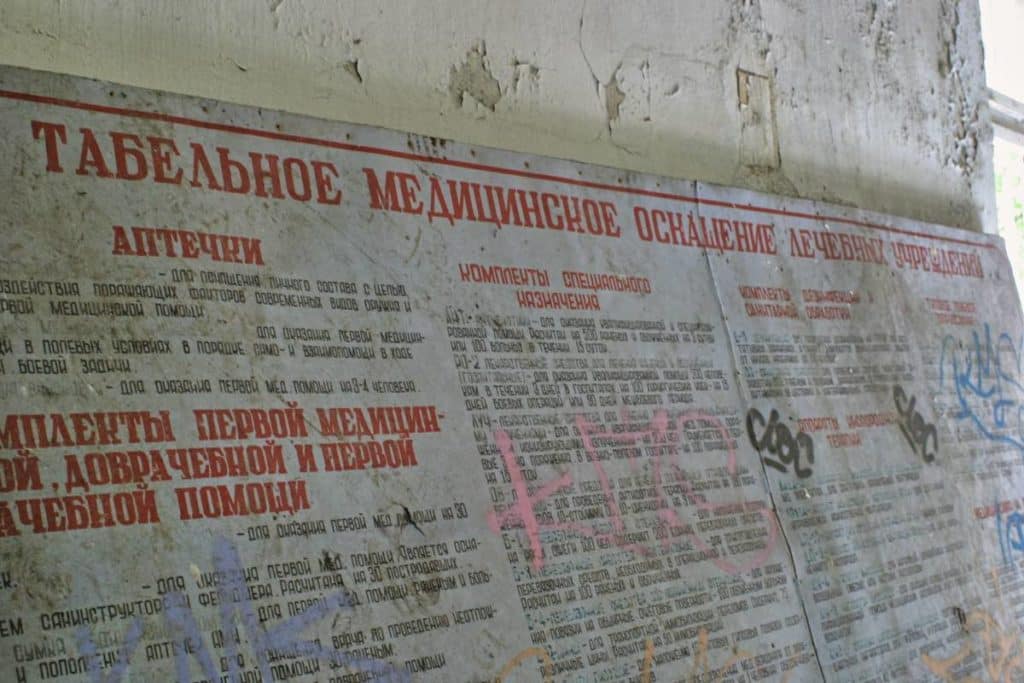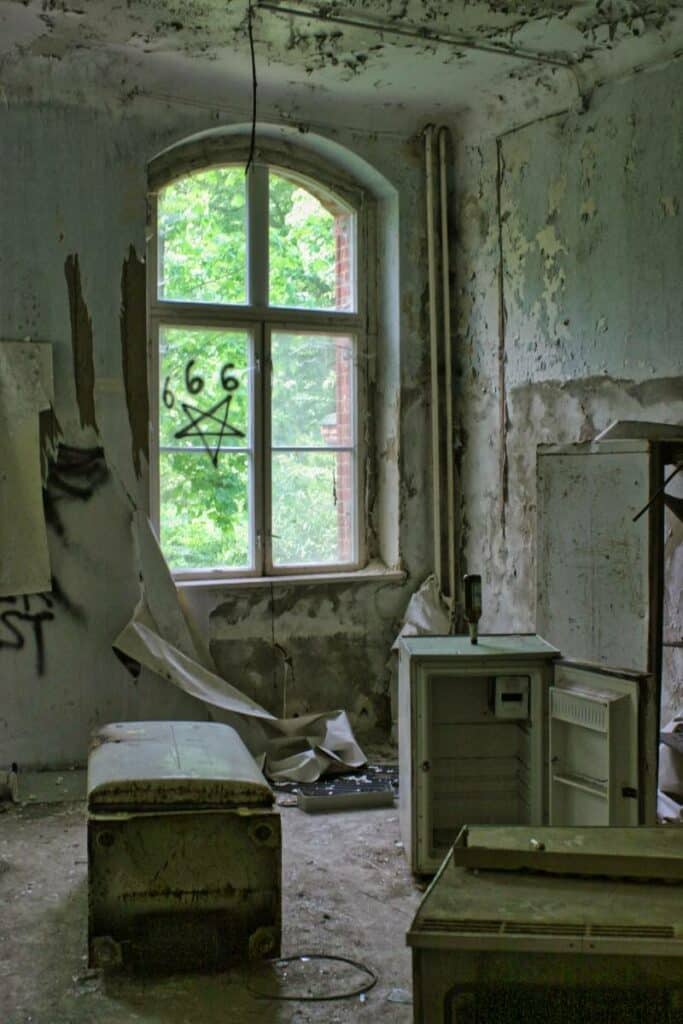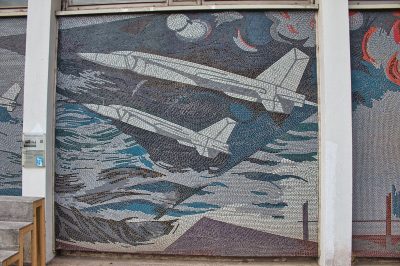In the Berlin area and in Brandenburg, the small town of Beelitz, located about 60 kilometers southwest of Berlin’s city center and 30 kilometers southwest of Potsdam, is ubiquitous: asparagus from Beelitz is considered a high-quality delicacy that is aggressively advertised in grocery stores and street markets in the spring. Less well known is the huge area of the former Beelitz Sanatorium with its more than 60 buildings, covering more than 200 hectares. We want to explore this “lost place” together in this article.
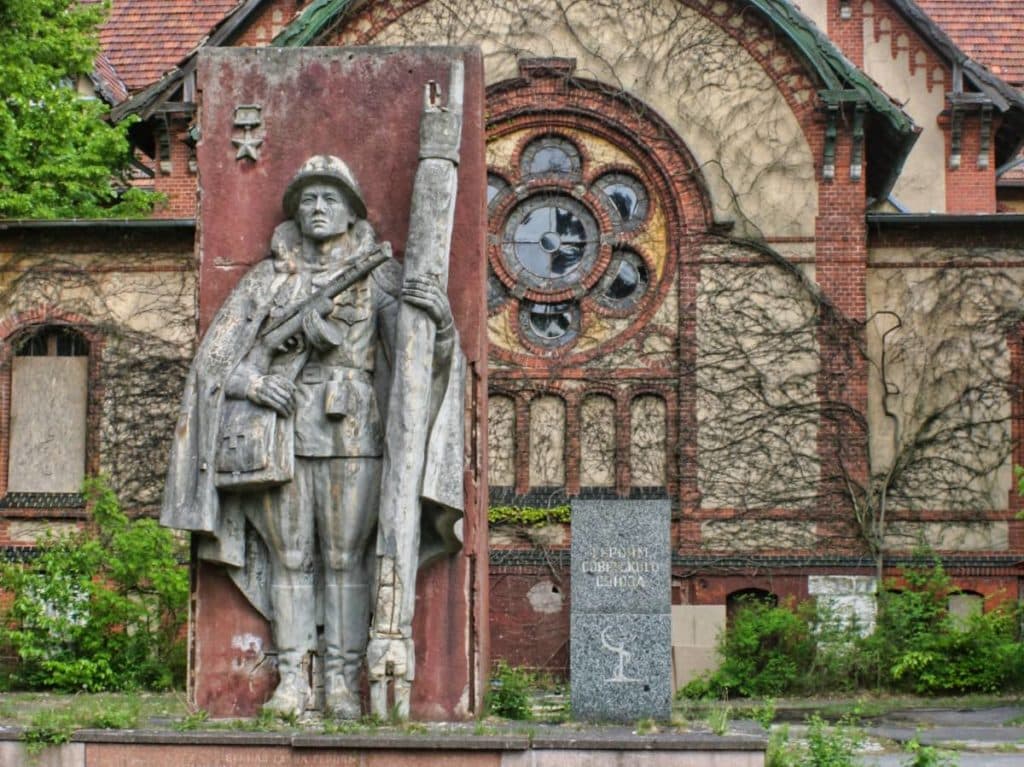
The eventful history of the Beelitz sanatorium
To examine the beginnings of Germany’s largest pulmonary hospital, we have to travel back in time 130, 140 years. In the late 19th century, German industry was booming and hundreds of thousands of workers and their families were living together in cramped quarters in the metropolises. The catastrophic hygienic conditions were breeding grounds for infectious diseases that were killing people in large numbers. In particular, tuberculosis, a disease that mostly affected the lungs, was widespread and the most common cause of death in the German Reich in the age group between 15 and 40. At that time, the best remedy against the insidious disease was recommended to be the prolonged inhalation of fresh, clean forest air.

The Establishment of the Beelitz Sanatorium
For this reason, starting in 1898, a sanatorium was built in the remote pine forests of Beelitz on behalf of the Berlin State Insurance Institute, which admitted patients for the first time in 1902. The bed capacity was even doubled a few years later from 600 to 1200. A train line connected the pulmonary sanatorium, which was supplied with electricity and heat by a specially built power plant, with the metropolis of Berlin, which had millions of inhabitants.
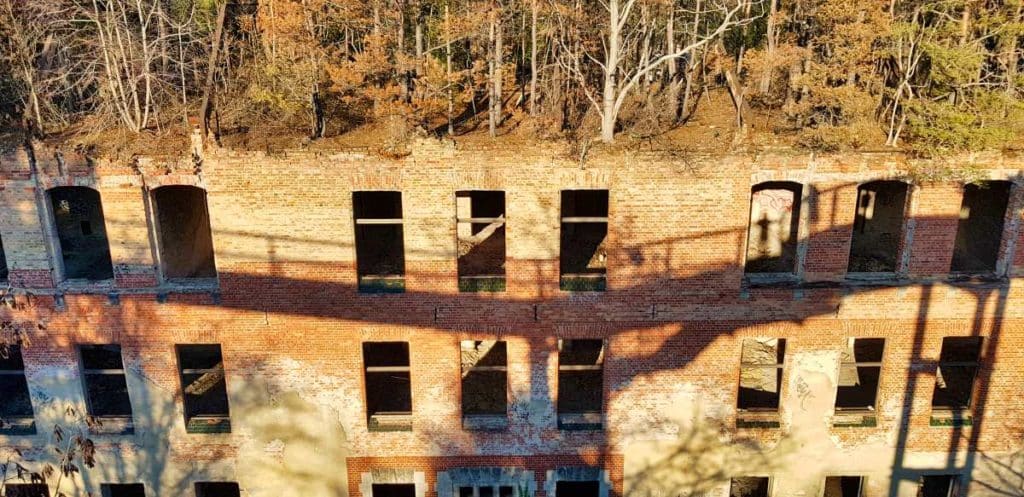
In order to satisfy the prevailing moral ideas of Wilhelmine Germany at the time, men and women were housed in strictly separate areas in the Beelitz sanatorium. There was a further division between infectious and noninfectious patients. In addition to other treatments, extensive walks in the forest and park areas or hours of lying in the largely dust-free fresh air provided relief and healing. On postcards, patients proudly reported their recovery process to their relatives: “Minna, I’ve already gained three pounds!”
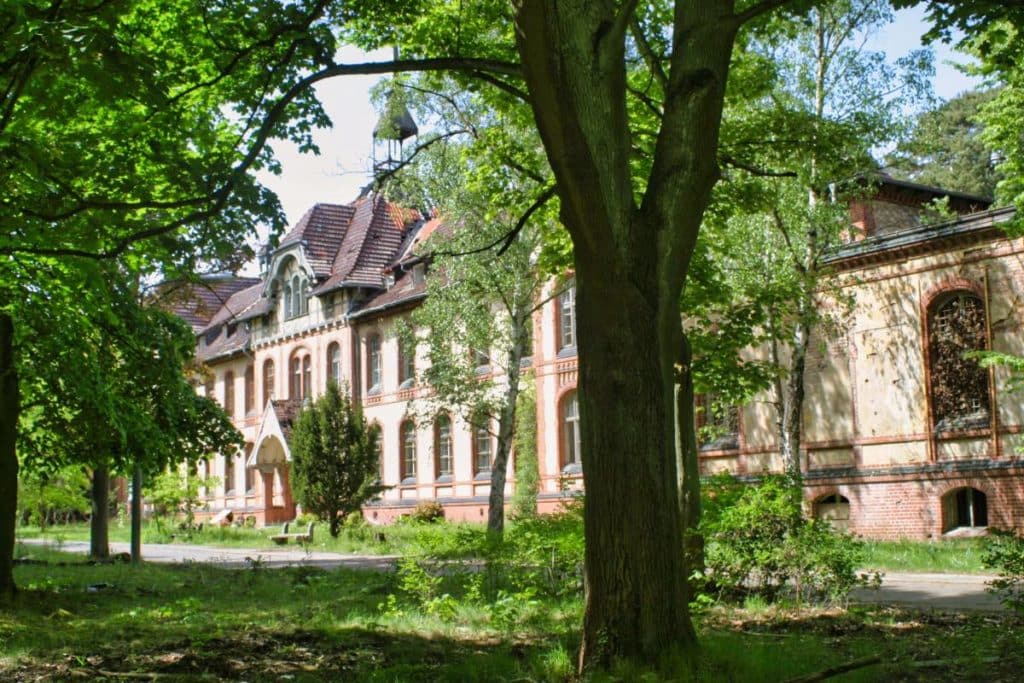
Short-term transformation into a military hospital
In the fall of 1914, however, the hospital idyll in the sand of the Mark Brandenburg was over: instead of sick, haggard city dwellers, wounded soldiers were now forced to lie in the beds. The First World War had begun and the priorities were suddenly different. The field-grey uniforms were to recover quickly in order to be able to risk their lives again at the front. Over 12,000 soldiers were admitted here during the four years of the war. Among them was the simple private Adolf Hitler, who was treated in Beelitz for two months after being wounded in the fall of 1916.

Expansion
In the 1920s, however, the Beelitz sanatorium once again focused on TB patients and demand exceeded supply. For this reason, capacities were again expanded in a third construction phase from 1926 to 1930. And these additional beds were also urgently needed from 1939, when the Beelitz sanatorium once again functioned as a military hospital. At the end of April 1945, Beelitz even became a theater of war during the Soviet attack on the Reich capital. Scattered German army units disbanded the military hospital and most of the approximately 3,000 patients were able to escape to the west with the help of the Wehrmacht to avoid capture by the Red Army.
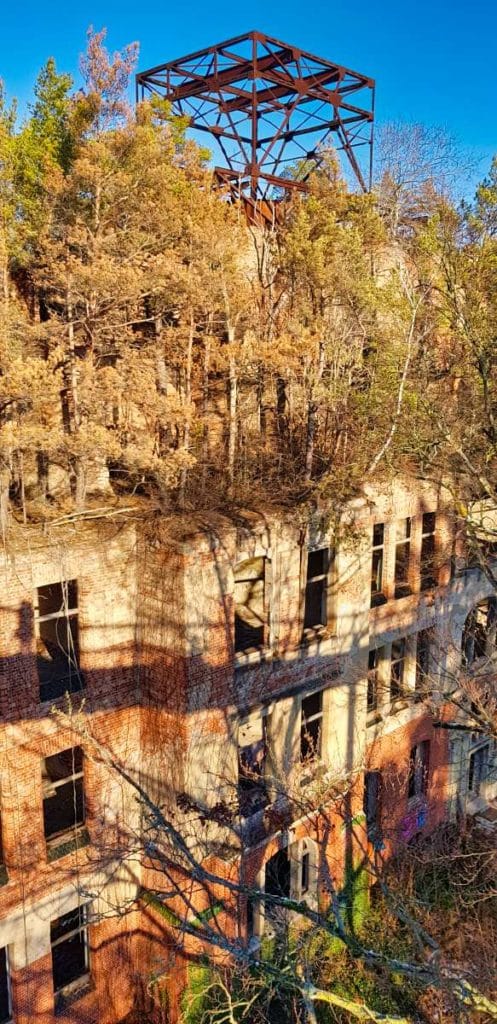
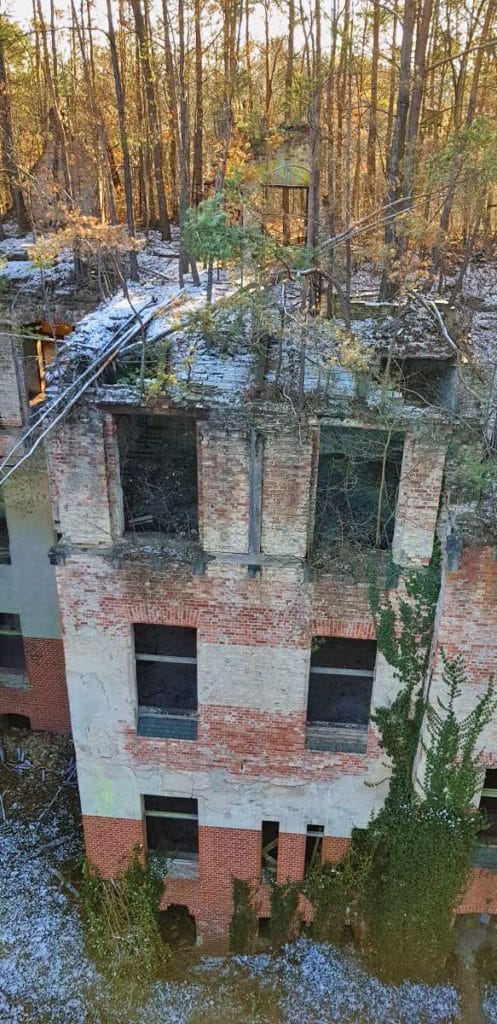
Takeover by the Soviets
Although the sanatoriums had been partially destroyed by air raids and the fighting of April 1945, the Soviet military took over the hospital, repaired it, and henceforth used it for its soldiers. For almost fifty years, from 1945 to 1994, it would function as the largest Soviet hospital complex outside the Soviet Union.
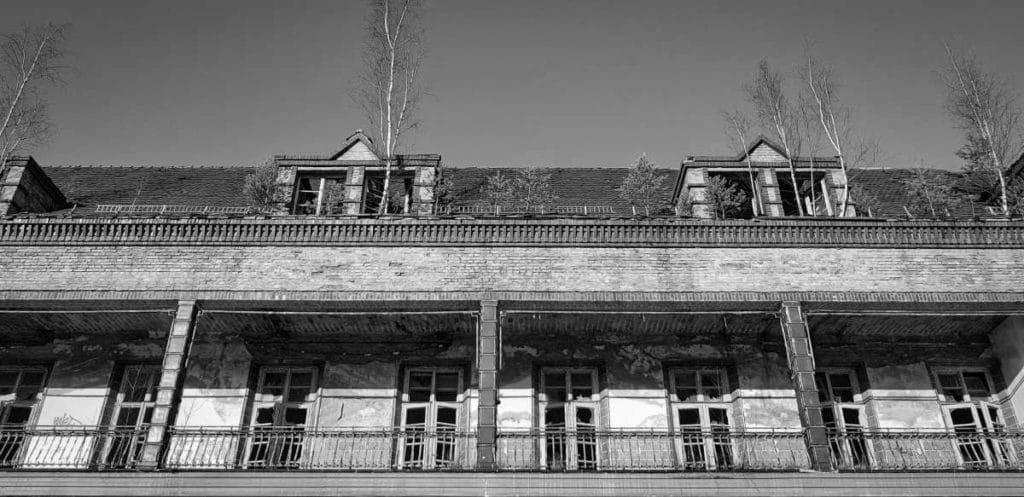
Honecker in Beelitz
However, the Beelitz Heilstätten only came to the attention of the world public after the collapse of the GDR. In the confused turnaround months after the fall of the Berlin Wall, the Beelitz Military Hospital, whose grounds enjoyed extraterritorial status – comparable to an embassy – hosted one of its most famous patients. The deposed former head of state of the GDR, Erich Honecker, was treated here for cancer. Honecker, who was charged with various crimes, thus evaded the grasp of the investigating authorities. After almost a year’s stay in Beelitz, the Soviets airlifted Honecker and his wife Margot to Moscow on a military jet in March 1991. Only three years later, with the withdrawal of the last Soviet/Russian troops from the eastern part of reunified Germany, this chapter of the Beelitz sanatoriums also ended.
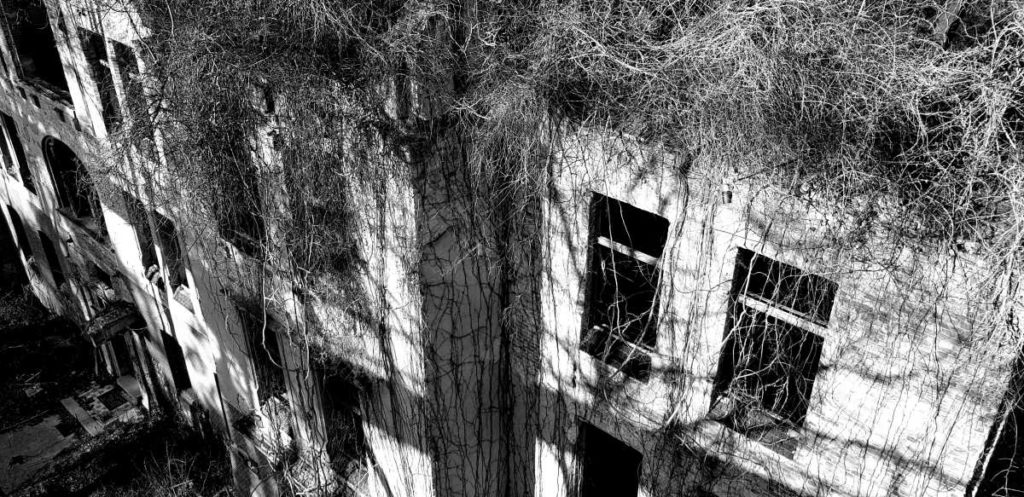
The Beast of Beelitz
After the Russian departure, a long period of oblivion and decay began for the old hospital area Beelitz Heilstätten. Unclear ownership, changing investors, and the Beeltiz Sanatorium’s gloomy atmosphere caused the buildings to decay into ruins and become a popular creepy spot in the Satanist and Goth scene. The morbid charm and eerie ruin aesthetics were further underpinned by a gruesome real-life crime. In March 1991, a young mother and her newborn child fell victim to a bestial murder just a few meters outside the clinic grounds.
The brutal execution of the crime resembled the modus operandi of a serial killer who had been making the region unsafe since the fall of 1989: the “Beast of Beelitz” (“German: Bestie von Beelitz) as the tabloids luridly dubbed the murderer, had struck again. It was not until August 1991 that he could be overpowered by two joggers who had noticed a 1.90 m man masturbating in a patch of woods in pink women’s underwear. The lust killer Wolfgang Schmidt, who became Beate Schmidt in custody, killed a total of six people and is still in prison today.
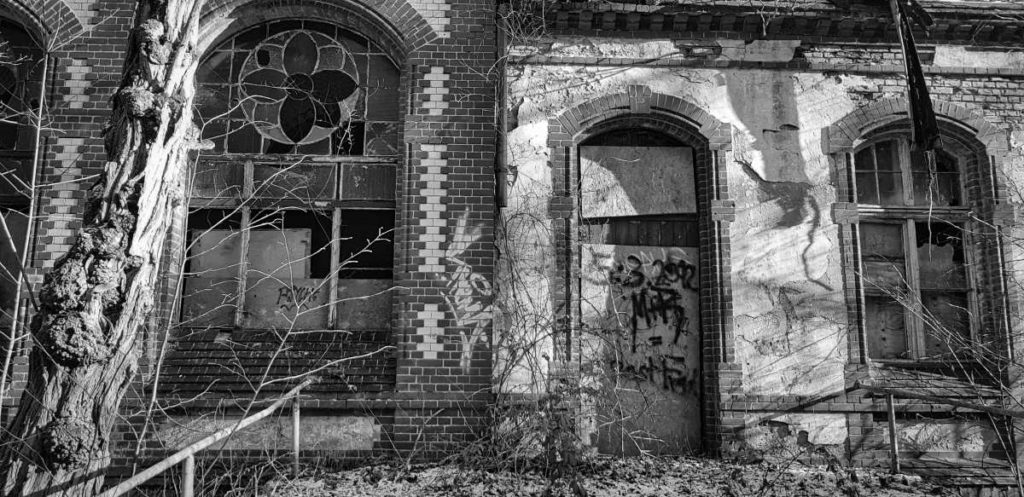
Another murder
In the new century, the former lung sanatorium of the Beelitz Heilstätten was once again the focus of public attention. After an erotic photo session in the dilapidated premises, another young woman lost her life. One of the photographers, a paleontologist with a doctorate from southern Germany, took the 20-year-old model to his pension in Beelitz. There – according to the statement of the hobby photographer – during sado-masochistic sex games an unintentional accident happened. However, forensic examinations and photos from the accused’s camera clearly pointed to a premeditated act and the dinosaur researcher was sentenced to many years in a psychiatric hospital.
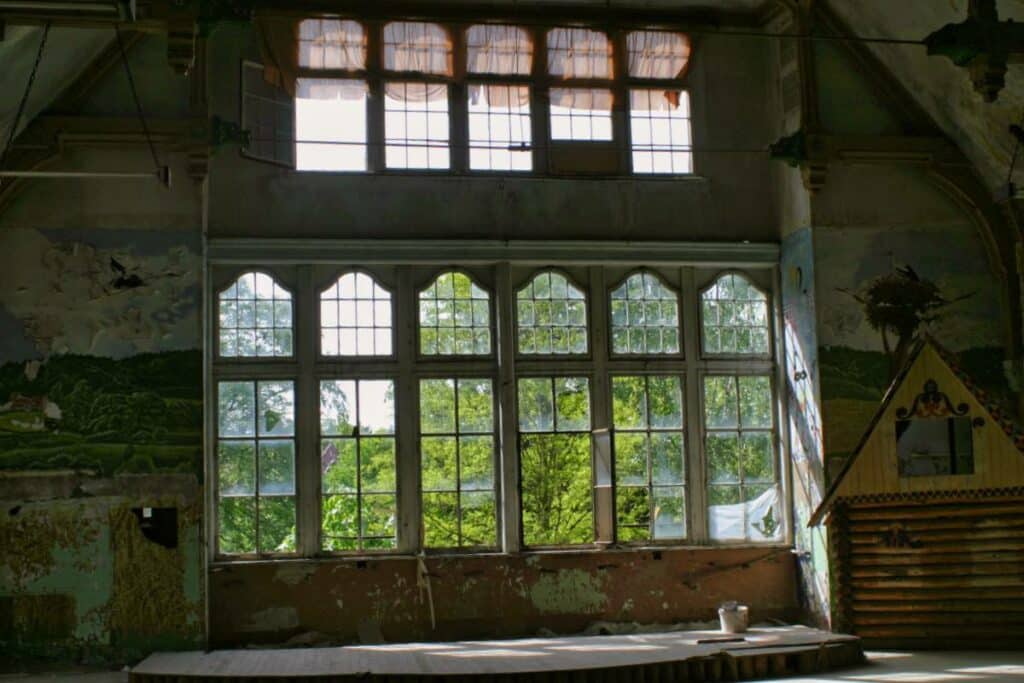
Unwanted guests
As a result, “dark tourism” continued to grow, even though it had long been forbidden to enter the Beelitz Heilstätten. In relevant Internet forums, followers of occult rites fantasized about the souls of the deceased wandering through the buildings at night. The illegal visitors, whether Satanists, photographers in search of morbid motifs, or teenagers who just wanted to get really spooked at night, became more numerous. Several of these mostly nocturnal excursions ended with accidents in the dilapidated legacies, serious injuries and another death: a 25-year-old man died in 2010, a few days after falling out of a window on the fourth floor, in hospital in Berlin.

The Beelitz sanatorium today – Walking the treetop trail
It was not until 2015, after various failed attempts at revitalization, that sustainable movement slowly came into the future design of the listed sanatoriums. A tourism concept for future visitors, but also an economic use of the area with residential development and partial reuse of the premises was concretized. In the same year, the spectacular treetop path, which leads at a good 20 meters above a part of the ex-clinic, was ceremonially opened.


After the expansion of the trail in the summer of 2020, it now measures a total length of over 700 m and features attractions such as the giant hammock, the climbing snake “Sky Boa” designed for children or the “Goosebumps Bridge”. Information on opening hours and admission prices can be found here.
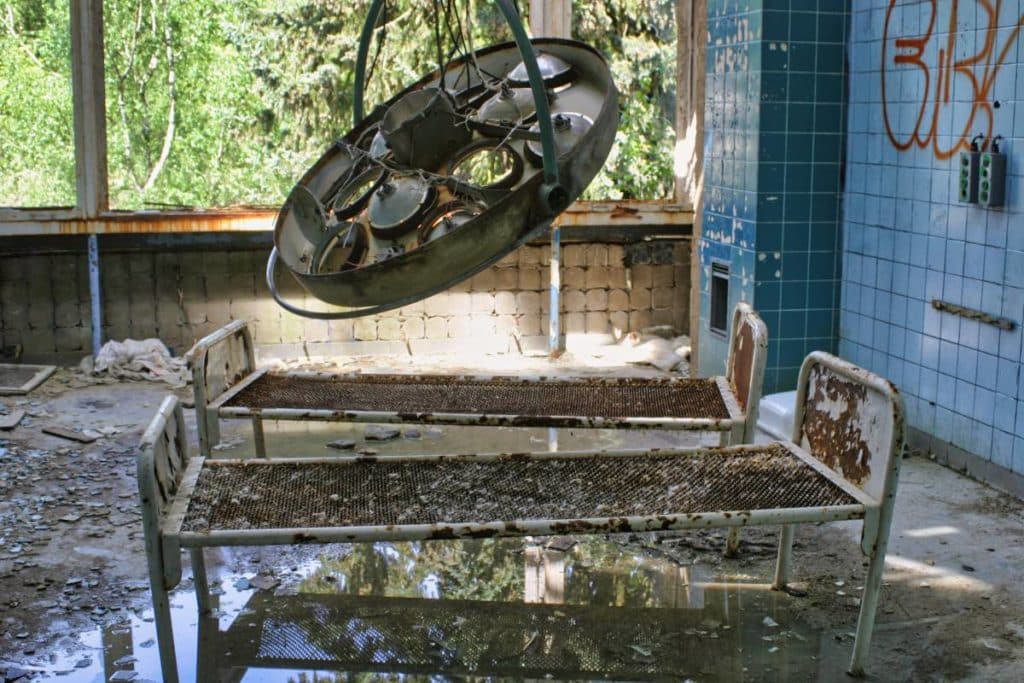
Guided tours
The buildings, some of which are very dilapidated – such as the surgery or the Alpenhaus with its wooded roof – can only be visited on organized tours for safety reasons. You will get an insight into what the rooms of the sanatoriums once looked like from the inside. The guides will show you photos of the former use. Inside you can also see what the buildings looked like during the Soviet era. There are also attractive thematic tours specially designed for (amateur) photographers.
Barefoot Park
And if the dilapidated ruins don’t appeal to you, or if you’re in the mood for something “non-historical,” you’ll find an alternative activity in the immediate vicinity. In the barefoot park – nomen est omen – you can experience the fascination of “walking without shoes”. On four color-coded circuits, you can get closer to various natural surfaces than ever before. In addition, the otherwise always well-soled city dweller can discover that calluses under the feet can definitely have their raison d’être! Details about the barefoot park are available here.

Getting to Beelitz
The Heilstätten Beelitz are definitely one of the most attractive and multifaceted excursion destinations in the Berlin area. By car, you can reach Beelitz via the A10/9 in about 45 minutes from Berlin city center. An excellent alternative is also the regional express (RE 7) from Berlin Hauptbahnhof, which takes 42 minutes. The destination station Beelitz Heilstätten was, interesting historical side note, signposted in German and Russian until 1994: Вокзал Белитц-Хайльштеттен.
Book recommendations
No products found.
Had enough of Beelitz? Then let’s go to Berlin and discoer the city with this tour guide!
No products found.
No products found.
No products found.
How did you like our trip to the Beelitz Sanatorium? Let us know and write us a comment! Feel free to follow us on Facebook for more exciting articles!


